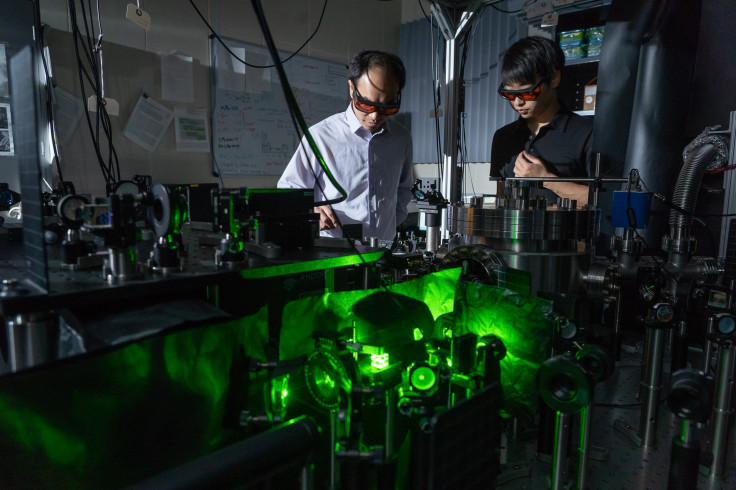World’s Fastest Spinning Object Developed, Rotates 60 Billion Times Every Second

In a major breakthrough, an international team of physicists has crafted the fastest spinning object in the world — a tiny dumbbell that completes as many as 60 billion rotations just within a second.
The newly-developed object — measuring approximately 170 nanometers wide and 320 nanometers long (one nanometer is a billionth of a meter) — is just as small a tiny virus and 100,000 times faster than a standard drilling machine used in dental clinics. Both these qualities, as the researchers described, make it an ideal object to study several properties of quantum mechanics — a branch of physics describing nature at the smallest scales of energy levels of atoms and subatomic particles.
"This study has many applications, including material science," Tongcang Li from Purdue University, one of the institutes behind the new object, said in a statement. "We can study the extreme conditions different materials can survive in."
Li worked with partners from Peking University, Tsinghua University, and the Collaborative Innovation Center of Quantum Matter in Beijing to create this object. They used silica, a compound commonly found in quartz and sand, to synthesize the dumbbell.
Once the material was created, they used a controlled beam of laser to levitate the object in a high-pressure vacuum. However, the beam was applied in two ways — linear and circular — for different effects.
When the beam was applied in a straight line, the nanoparticle-sized dumbbell started vibrating, but as soon as the configuration was changed to a circle, it started spinning at ultra-fast speeds, more like a motorized rotor.
As this behavior was similar to devices (a rotor and torsion balance or a device for measuring tiny forces and torques) used for measuring gravitational constant and density of Earth, the researchers posited that the wide-spanning uses of the newly-developed object could also include a study of quantum mechanics as well as the properties of a vacuum – both of which are not well understood.
“People say that there is nothing in the vacuum, but in physics, we know it's not really empty," Li added in the statement, stressing on the future implications of the object. "There are a lot of virtual particles which may stay for a short time and then disappear. We want to figure out what's really going on there, and that's why we want to make the most sensitive torsion balance."
They plan to increase the spinning and vibration speed of this object and conduct different experiments to test several theories and learn more about frictional and gravitational forces prevailing inside a vacuum.
The study titled, “Optically Levitated Nanodumbbell Torsion Balance and GHz Nanomechanical Rotor,” was published July 20 in the journal Physical Review Letters.
© Copyright IBTimes 2024. All rights reserved.




















